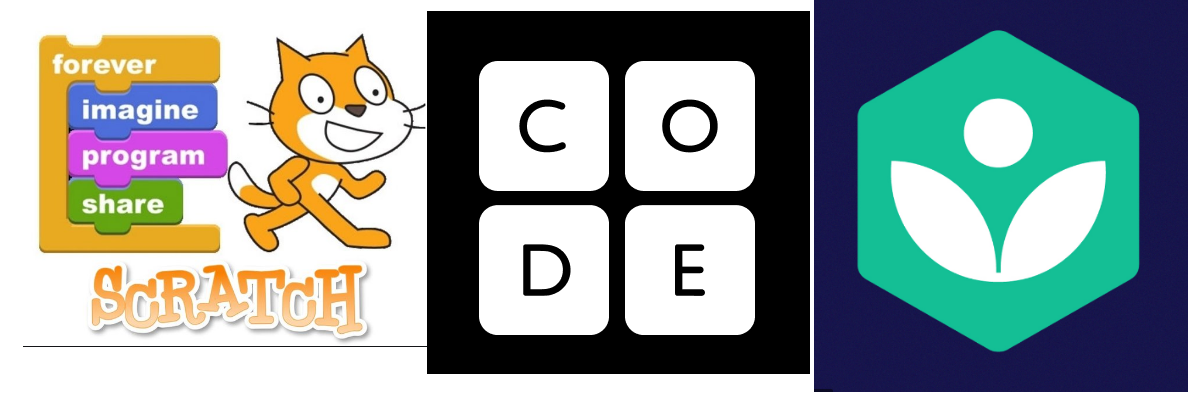From Slots to Live Tables: Discover the Exciting World of Online Casinos Today
The world of online casinos has transformed the way people experience gaming. With just a few clicks, players can dive into a vibrant universe filled with everything from classic slot machines to immersive live dealer tables. This digital revolution has opened up new avenues for entertainment, making it easier than ever for enthusiasts to enjoy their favorite games anytime and anywhere.
As technology continues to evolve, online casinos are pushing the boundaries of what’s possible. skyhills casino exemplifies this innovation by not just replicating the traditional casino experience, but enhancing it with stunning graphics, interactive features, and real-time gameplay. Whether someone prefers the thrill of spinning the reels or the excitement of playing against a live dealer, the options are endless. This article explores the diverse landscape of online casinos, highlighting the unique experiences that await players in this dynamic environment.
Overview of Online Casinos
Online casinos represent a significant shift in how gaming enthusiasts engage with their favorite games. They provide players with instant access to a plethora of options, including slots, table games, and live dealer experiences. The convenience of playing from a computer or mobile device has fueled their popularity, attracting a wider audience of players.
Technological advancements play a vital role in this evolution. High-definition graphics and immersive sound effects create an engaging atmosphere, akin to that of a physical casino. Live streaming technology enhances the experience, allowing players to interact with live dealers in real-time. This interactive element fosters a sense of community among players, bridging the gap between virtual and in-person gaming.
Security measures are crucial in the online gaming environment. Licensed operators implement robust protocols to ensure player data remains safe and secure. Regulatory bodies oversee compliance, guaranteeing fair play and transparency within the industry. These security features provide players with peace of mind, encouraging more participants to experience the thrill of online gaming.
Additionally, game variety is a key attraction. Online platforms host an extensive range of games, from traditional favorites to innovative new titles. This diversity caters to different preferences, ensuring that every player can find something that suits their taste. Whether a player enjoys fast-paced slot games or strategic table games, the options are virtually limitless.
Promotional offers also enhance the appeal of these platforms. Players benefit from welcome bonuses, free spins, and loyalty programs, providing added value to their gaming experience. These incentives not only attract new players but also encourage existing participants to return for more. Thus, the world of online casinos continues to grow, offering an ever-evolving landscape of exciting gaming opportunities.
The Evolution of Online Gambling
The online gambling landscape has transformed significantly, adapting to technological advancements and changing player preferences. The transition from traditional casinos to digital platforms has altered how people engage with their favorite games.
From Slots to Table Games
Slot machines were the initial stars of online platforms, attracting players with their simplicity and variety. Players quickly embraced the convenience of spinning reels from home. As the market expanded, table games like blackjack and roulette gained traction, offering strategic gameplay and social interaction. These games replicate the thrill of in-person gaming. Enhanced features such as interactive interfaces and customizable settings create unique experiences for users. Today, players can easily switch from one game type to another, catering to different tastes and gaming styles. This evolution ensures options remain plentiful and engaging for all enthusiasts.
The Rise of Live Dealer Options
Live dealer games emerged as a groundbreaking innovation, bridging the gap between online and in-person experiences. These games utilize real-time video streaming technology, allowing players to interact with professional dealers from home. As a result, the sense of authenticity and excitement increases. Players can engage in various table games while enjoying the ambiance of a casino setting. Innovations in multi-camera angles and chat functions enhance player involvement and foster community. The popularity of these games exemplifies the industry’s commitment to providing immersive experiences, catering to a broader audience seeking social interaction alongside traditional gameplay.
Types of Games Offered
Online casinos provide a diverse range of gaming options that cater to various player preferences. These offerings consist of slot machines, table games, and live dealer experiences, each with unique features and appeals.
Slot Machines
Slot machines dominate the online gaming landscape due to their accessibility and engaging features. Players can choose from classic three-reel slots to modern video slots with intricate graphics and themed content. Many online platforms offer progressive jackpots, which increase in value as players engage with the games. This enticing potential for large payouts attracts players worldwide. Gamers appreciate the simplicity of slots, requiring no special skills or strategies. The immersive sound effects and vibrant visuals enhance the overall experience, providing a thrilling escape for players looking for entertainment.
Table Games
Table games present an appealing alternative for players seeking strategic gameplay. Classic options include blackjack, roulette, and baccarat, which require a combination of skill and chance. The rules are straightforward, making these games accessible to newcomers while still offering depth for seasoned players. Online platforms typically feature various versions of each game, allowing for customization based on player preferences. Many players enjoy the social aspects of table games, as they can engage with fellow gamers through chat features. This sense of community adds to the overall enjoyment and makes table games a popular choice in the online gaming experience.
Live Dealer Games
Live dealer games create an authentic casino atmosphere by connecting players with real dealers via high-definition video streaming. This innovative approach allows players to experience table games in real-time, interacting with dealers and other players as they would in a physical casino. Popular games in this category include blackjack, roulette, and poker, offering players the thrill of live gameplay without leaving their homes. The use of multiple camera angles enhances the viewing experience, providing players with a comprehensive view of the action. The combination of technology and human interaction bridges the gap between online and in-person gaming, fostering a more engaging experience for players.
Technologies Behind Online Casinos
The online gaming industry relies heavily on advanced technologies that enhance player experiences and expand gaming options.
Software Providers
Software providers play a vital role in shaping the online gaming landscape by developing engaging games and platforms. Companies like Microgaming and NetEnt offer a variety of games, including slots and table games, featuring high-quality graphics and innovative features. These providers supply the backend software that ensures seamless operation of online casinos, from game mechanics to payment processing. Their commitment to regular updates and new game releases keeps the content fresh and entertaining for players. Additionally, many providers adhere to strict licensing and regulatory standards, ensuring that the gaming experience remains safe and fair for all participants.
Streaming Technology
Streaming technology has revolutionized how players interact with games by introducing live dealer experiences. This technology relies on high-definition video feeds to connect players with real dealers in real-time. With multi-camera angles and interactive features, players can participate in games such as blackjack and roulette from the comfort of their homes. The security and reliability of streaming technology are paramount, as operators implement robust measures to ensure uninterrupted gameplay and data protection. This advancement fosters a sense of community among players, allowing them to chat and engage with both dealers and fellow gamers, replicating the social atmosphere of traditional casinos.
Advantages of Online Casinos
Online casinos offer numerous advantages that enhance the gaming experience. These platforms provide unparalleled convenience and access to a wide range of gaming options.
Convenience and Accessibility
Convenience defines the online gaming experience. Players enjoy the flexibility of accessing their favorite games from home or on-the-go using smartphones and tablets. There’s no need for travel or waiting in lines, as games are available 24/7. This accessibility appeals to a diverse audience, from casual gamers to avid enthusiasts, enabling them to play whenever it suits their schedule. Additionally, registration and money management make it easy to create accounts, deposit funds, and withdraw winnings. Players can focus on enjoying their gaming experience without logistical barriers.
Variety of Game Options
A remarkable variety of games keeps players engaged. Online platforms host numerous options, including classic slots, innovative video slots, and traditional table games. This broad selection ensures every player finds something appealing, regardless of skill level or preference. Strategic enthusiasts can indulge in games like blackjack and roulette, while those seeking simplicity can enjoy an array of slot machines. Furthermore, the emergence of live dealer experiences bridges the gap between traditional and online gaming, allowing participants to interact with real dealers. This diverse offering reflects the industry’s commitment to catering to various tastes and preferences.
Responsible Gambling Practices
Responsible gambling practices play a crucial role in promoting a safe gaming environment. Operators implement various measures to safeguard players from potential harm. These include age verification protocols to ensure that all participants are of legal gambling age. Additionally, many platforms provide self-exclusion options, allowing players to restrict their access to games if they feel gambling is becoming a problem.
Education is another key aspect of responsible gambling. Online platforms often supply information on responsible gameplay, including tips for recognizing signs of problem gambling and links to support organizations. Players benefit from understanding how to manage their time and budgets effectively, which reduces the risk of excessive gambling.
Setting deposit limits is a common feature offered by many gaming operators. This enables players to cap their spending over a specific period, helping them maintain control over their gambling habits. Some casinos go further by offering reality checks, reminders that alert players to their session duration, encouraging them to pause and assess their gaming behavior.
Moreover, promoting transparency builds trust between players and operators. Reputable platforms display licenses and adhere to regulations that ensure fair play. Independent audits and reports affirm the integrity of the games provided, reassuring players that the outcomes are random and unbiased.
Communities also contribute to responsible gambling by creating environments where players can share their experiences and find support. Forums and discussion groups foster a sense of camaraderie, guiding individuals toward healthier gambling practices. Ultimately, the combination of operator measures, educational resources, and community support creates a comprehensive framework for promoting responsible gaming within the online landscape.
Conclusion
The world of online casinos is thriving with innovation and variety. Players now have access to an extensive range of games that cater to all preferences and skill levels. The evolution from simple slots to immersive live dealer experiences showcases the industry’s commitment to enhancing player engagement and satisfaction.
As technology continues to advance, online casinos are set to offer even more exciting features and gameplay options. With a strong focus on security and responsible gaming practices, players can enjoy their favorite games in a safe environment. This dynamic landscape promises to keep attracting new players while providing a thrilling experience for seasoned enthusiasts.














